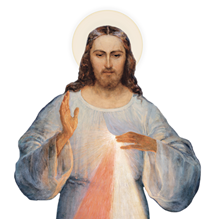
Every year, on the feast of St. Mark, I feel the urge to write something brilliant, short, and original.
By Br. Stephen J., MIC
Every year, on the feast of St. Mark (April 25), I feel the urge to write something brilliant, short, and original. As a seminarian studying graduate-level theology, I rarely find time for creative writing outside of short rhetorical flourishes in academic papers and essay questions. The end of April, in particular, brings a fine rush to complete term papers and study for exams.
Despite these obstacles, the desire is there, and I have little doubt that St. Mark himself inspires it.
The Gospel according to St. Mark is a brilliant piece of writing. At just 16 chapters and 683 verses (in the RSVCE), it is the shortest of the four Gospels, and it tells the story of Jesus with great speed and energy. From the very first verse, Mark proclaims Jesus as the Son of God, and by the end of the first chapter, it is already “impossible for Jesus to enter a town openly,” since “people kept coming to him from everywhere.”
Winged Lion
One of the traditional symbols for Mark is the winged lion from a vision of the prophet Ezekiel (Ezek 1:10). Mark certainly portrays Jesus as the Lion of Judah. Where Matthew emphasizes the teaching aspect of Jesus’ ministry, and Luke His deeds of mercy, Mark depicts a man of action who demonstrates the Kingdom of God with spirit and power.
He focuses on stories of Jesus’ powerful deeds, punctuating his sentences with words like “and” and “immediately.” He insistently builds up the claim that Jesus’ salvation is offered universally with words like “all,” “the whole,” “everyone,” and “everywhere.” There are a few extended speeches, mostly near the end; usually Jesus is busy doing something.
There is strong evidence that the Gospel according to Mark was the first written Gospel account, set down in writing as early as 58 A.D., and that both Matthew and Luke drew from it as well as from other sources oral and written.
Peter's disciple
Mark does not give his account of Jesus first-hand. It is traditionally understood that he was a disciple of Peter, who called him “my son” (1 Pt 5:13). This is supported by the structure of his Gospel account, which matches with Peter’s preaching of Jesus in Acts 10:34-42.
The Acts of the Apostles mention the name of “John, who is called Mark,” four times. His mother’s house was in Jerusalem (Acts 12:12), and he accompanied Barnabas and Saul in their missionary journeys (Acts 12:25, 15:39). He had a critical moment of hesitation about the mission in Pamphylia, and so Paul refused to work with him for a while (Acts 15:37-38). However, later mentions in Paul’s letters (Col 4:10, 2 Tm 4:11) indicate that he was reconciled with Paul and became a valued helper and friend.
The feast of St. Mark is a time to meditate on the Scriptures and on the life of Jesus, just as Mary did. Therefore, I recommend you take an hour or so to read the whole Gospel once through. If you don’t have that kind of time, it could be very fruitful to read and meditate on one chapter, even one episode from the Gospel.
Saint Mark the Evangelist, pray for us!
{shopmercy-ad}

















